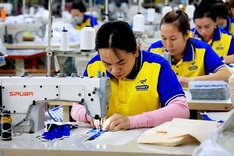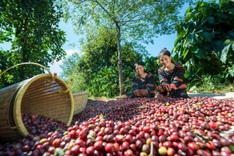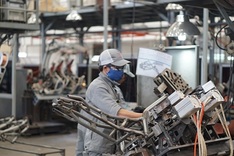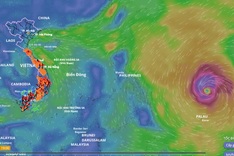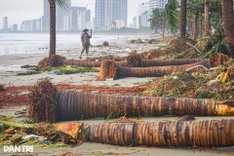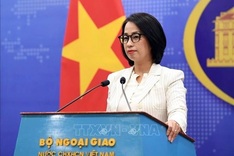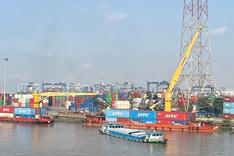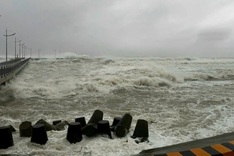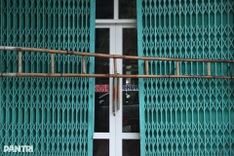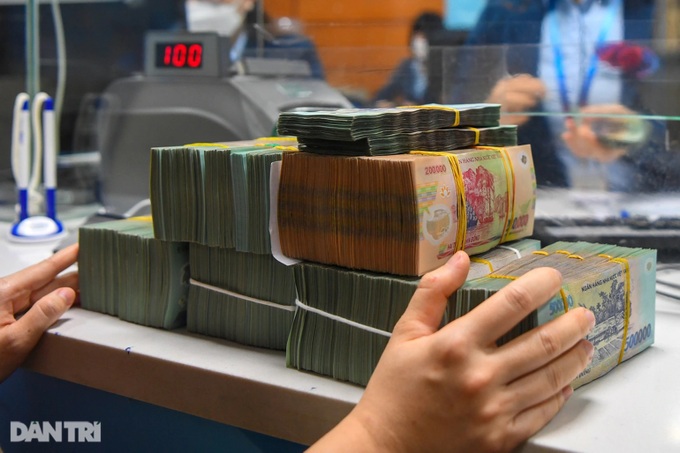
Illustrative photo
Although Vietnam’s average inflation rate for 2025 is projected at 3.4 per cent, rising exchange rates and rapid credit growth may pose inflationary risks in the second half of the year, economic experts warned at a conference in Hanoi on July 9.
Nguyen Duc Do, Deputy Director of the Institute of Economics and Finance under the Ministry of Finance, noted that the USD/VND exchange rate surged significantly in the first half of 2025, despite a general downward trend in the global US dollar index (DXY). This divergence contrasts with the typical correlation observed in late 2024, when both indicators moved in tandem.
According to Do, the abnormal fluctuation in 2025 was primarily driven by new US import tariffs, which triggered concerns over Vietnam’s export outlook and reduced foreign exchange inflows. In addition, the US Federal Reserve is expected to keep interest rates high in response to declining domestic inflation, further widening the interest rate gap between the USD and VND, thus pressuring the exchange rate.
Continued uncertainty over US tariff policy and elevated import duties on Vietnamese goods are expected to hamper exports to the US in H2, intensifying both exchange rate volatility and inflation risk.
At the same time, with the Government targeting 16 per cent credit growth and pushing the State Bank of Vietnam (SBV) to maintain low interest rates in support of 8 per cent GDP growth, the monetary supply could expand more rapidly than nominal GDP, potentially adding upward pressure on prices.
Offsetting factors
Despite these concerns, Do pointed to several factors that could help contain inflation. Declining global growth and tariff-related export slowdowns are expected to boost domestic supply, easing demand-driven inflation. Falling prices of key commodities globally may also dampen cost-push inflation.
Assuming the monthly consumer price index (CPI) increases by an average of 0.27 per cent, the same as the average from 2015 to 2024, Vietnam’s annual inflation rate would remain at 3.4 per cent. Should global trade tensions worsen, leading to a recession and a sharper decline in commodity prices, the full-year inflation rate could fall further to around 3 per cent, Do said.
If realised, 2025 would mark the 11th consecutive year Vietnam has kept inflation below 4 per cent.
Strong H1 performance
Citing National Statistics Office data, Nguyen Dao Tung, President of the Academy of Finance, said Vietnam’s economy showed robust recovery in the first half of 2025, particularly in the second quarter.
GDP growth in Q2 reached 7.96 per cent year-on-year, lifting first-half growth to 7.52 per cent, the highest for the January–June period since 2011. Unlike 2024, when export growth was the primary driver, H1 2025 expansion was fuelled by a 7.95 per cent rise in domestic consumption and a 7.98 per cent increase in investment.
Tung attributed the momentum to pro-growth fiscal and monetary policies, including tax breaks, increased public investment, lowered interest rates, relaxed credit controls, and flexible exchange rate management.
“These measures have been vital in supporting Vietnamese businesses amid global headwinds,” Tung said.
Outlook and risks
Despite the strong first-half showing, challenges loom in the latter half of the year. Tung warned that persistent US trade tensions could weaken global demand, posing serious risks for Vietnam’s export sector and production.
Domestically, the steep appreciation of the USD/VND exchange rate in H1 could continue to weigh on inflation.
A representative from the Ministry of Finance’s Price Management Department stressed the need for agile and effective price management to maintain inflation control while still prioritising economic growth. The Government must also remove bottlenecks for production and livelihoods, while carefully phasing in market-based pricing for public services and state-managed goods in line with CPI stability goals.


